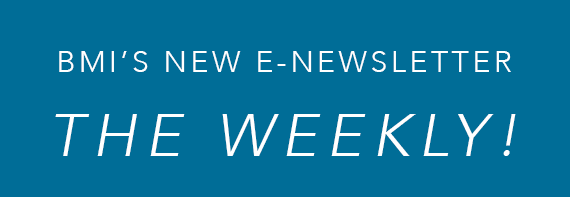Hooks: How Many Are Enough?

When a student posed the question, “How many hooks does a song need in order to become a hit?” I thought about the latest Miranda Lambert single, “I Ain’t in Kansas Anymore” (written by Lambert, Jesse Frasure, and Jenee Fleenor). The song is a masterclass in writing hooks, serving up a veritable banquet of one hook after another.
Some people use the terms “hook” and “chorus” interchangeably, referring to the entire chorus as “the hook.”
A hook can be defined as any aspect of a song that catches listeners’ ears—a short musical phrase, a unique instrumental sound, an unexpected musical interval or chord, a line in a lyric, or a nonsense syllable that is sung. It can appear in any section of a song. Let’s start by identifying some of the most popular musical hooks.
Signature Licks
Lambert’s recording of “I Ain’t in Kansas Anymore” begins with an instantly memorable instrumental lick that serves as the song’s intro. This four-bar lick is repeated ten times throughout the song, virtually burning it into listeners’ brains. It is performed on a combination of instruments that result in an atypical sound.
In my book 6 Steps to Songwriting Success (Billboard Books) I refer to this as a signature lick—an easily identifiable instrumental melodic phrase that hooks in listeners. These musical phrases are typically comprised of four or eight musical bars.
In my workshops, I sometimes play a song with a signature lick and ask my students to raise their hands as soon as they recognize the song. In most instances, every hand is raised within two or three seconds.
This tool can be heard in almost every style of music. In many cases, it is repeated throughout the verses. In addition to the intro, the signature lick is often used in the turnaround—the section between the end of a verse and the subsequent chorus.
In some cases, the signature lick is identical—or similar—to a melodic phrase heard elsewhere in the song. In many cases it is the melody heard on the first— or last—line of the chorus. For example, in my song “Why Don’t You Kiss Her” (written with Andrew Fromm; recorded by Jesse McCartney) the signature lick played on an acoustic guitar in the intro is identical to the melody of the first line of the chorus. By giving the listener a preview of the chorus melody, it sounds familiar the first time it recurs.
In other instances, the signature lick is a distinct melody that is not based on any melodic phrase heard in the song’s verses, chorus, or bridge. One of my all-time favorite examples of this is the acoustic guitar and fiddle lick in Rascal Flatts’ version of “What Hurts the Most” (written by Jeffrey Steele and Steve Robson).
As stated in my article, “What’s the Difference Between a Signature Lick and an Intro?”, while signature licks are most often played on guitar, keyboard, or another lead instrument, they can be played on any instrument or combination of instruments. An instantly identifiable drum pattern serves as an exceptionally effective signature lick in Imagine Dragons’ “Believer” (written by Daniel Reynolds, Justin Tranter, Benjamin Arthur McKee, Daniel Wayne Sermon, Robin Lennard Fredriksson, and Mattias Per Larsson). This pattern provides a melodic hook throughout the entire song, except for the breakdown section.
Signature licks can also be sung. For an excellent example, note the “Oh, oh-no, oh-no, oh-no” in the intro of the mega-hit, “Despacito,” (recorded by Luis Fonsi with Daddy Yankee, written by Luis Fonsi, Daddy Yankee, and Erika Ender). The song’s video has garnered an astounding 8 billion views!
Vocal Hooks/Nonsense Syllables
Some of the most memorable melodic hooks are sounds that are sung on what are essentially nonsense syllables. A perfect example of this tool can be heard in Camila Cabello’s #1 hit “Havana” (written by Cabello, Louis Bell, Adam Feeney, Kaan Gunesberk, Brittany Hazzard, Brian Lee, Ali Tamposi, Jeffery Williams, Pharrell Williams, and Andrew Wotman; recorded by Camila Cabello featuring Young Thug). The phrase “Ooh-na-na” is sung 75 times in the song. With “Havana,” Cabello became the first Hispanic singer to have a song certified “Diamond” by the Recording Industry Association of America (RIAA) for selling 10,000,000 units.
At one of my BMI Songwriter Workshops a music publisher shared, “When you add one of those non-lyric, sing-along hooks (such as ‘na-na-na-na’) you increase the chances of your song being recorded by 10,000 times.”
I can’t vouch for that exact number, but when I listen to many of my favorite songs, it is clear that these hooks undoubtedly add to the songs’ memorability.
This point is perfectly illustrated in Miranda Lambert’s “I Ain’t in Kansas Anymore.” The “Hey, hey—oh, oh”s sung in the pre-choruses provide an unforgettable vocal hook, and the “Na-na-na”s that comprise the songs’ post-choruses burn those sections into listeners’ brains.
The post-chorus—an optional, distinct section that occurs at the end of a chorus— typically does not bring in new lyrics, opting instead for repetition of the title and/or a melody sung on one or more nonsense syllables. These might be sounds such as: oh, ooh, ahh, hey, eye, no, doo-doo, or whoa. One of the most memorable components of Ed Sheeran’s worldwide smash, “Shape of You” is the “Oh-eye-oh-eye-oh-eye-oh-eye,” which is sung in the song’s post-choruses.
The “do-do-do-do-do-do” hook heard in the worldwide phenomenon “Baby Shark” (credited to Pinkfong) played a huge role in the song’s racking up an astounding 14.8 billion views, making it the most watched video on YouTube.
In Phillip Phillips’ recording of “Home” (written by Greg Holden and Drew Pearson) the melody sung on the syllable “Ooh” is one of the most memorable aspects of the song. The song became the most successful “coronation” (debut) single by an American Idol winner, reaching #1 on eleven separate Billboard charts and selling more than 5,400,000 million copies.
Instrumental Hooks
Vanessa Carlton’s self-penned “A Thousand Miles” is built on a foundation of unforgettable musical hooks—one played on piano between lines of vocal in the verses, and an additional, equally catchy one played by an orchestra string section in the pre-choruses. The song remained on the Billboard Hot 100 for forty-one weeks.
It would be hard to find a better example of the power of musical hooks than the one heard in the classic “Layla” (written by Eric Clapton and James Gordon; recorded by Derek and the Dominos and achieving additional chart success as an acoustic version by Eric Clapton). The chorus revolves around a guitar lick that dares you to get it out of your brain, and the ending of the song is an entirely different piano-centered musical section.
Summation
It can be useful to imagine that in order for a song to be successful it must accumulate 100 points. Some of these points can be obtained from the melody, while others can be earned by using an unexpected interval between notes, a fresh groove, an unexpected chord change, a unique lyric concept, production elements, exceptional lines of lyrics, an awesome vocal, and more. Musical hooks might be just the ticket to boost your score over the top.
Jason Blume is the author of 6 Steps to Songwriting Success, This Business of Songwriting, and Inside Songwriting (Billboard Books). His book, Happy Tails—Life Lessons from Rescued Cats and Kittens (SPS/Blue Mountain Arts) combines his love of photography and cats. Jason’s songs are on Grammy-nominated albums selling more than 50,000,000 copies, and in hit TV shows and films. A guest lecturer at the Liverpool Institute for Performing Arts (co-founded by Sir Paul McCartney) and at the Berklee School of Music, he has been interviewed as a songwriting expert for CNN, NPR, the BBC, Rolling Stone, and the New York Times. To receive a free video, “3 Things You MUST Do for Success,” song pitches, and weekly tips to enhance creativity click on https://tinyurl.com/yckat6fc. Join Songwriting With Jason Blume on Facebook for daily tips, free events and song critiques. For information about workshops, recorded lessons, webinars, and more than 135 additional articles visit www.jasonblume.com.








Community
Connect with BMI & Professional Songwriters